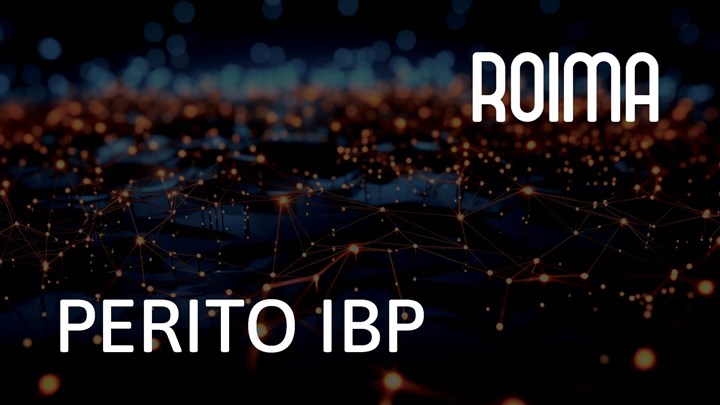AI missteps: The 5 critical errors that threaten your supply chain management
Are you set to upgrade your supply chain with AI? It’s a smart move for those who want to stay ahead. AI is revolutionizing how we forecast, plan, and execute, turning data into insights and insights into action. Yet, it’s vital to step back and ask if your organization has the muscle to handle such innovation.
In this article, we’ll discuss the 5 key errors to watch out for when introducing AI into your supply chain planning and how to sidestep the pitfalls to help smooth the way for smoother AI integration. This integration will ultimately strengthen your supply chain planning.
If you prefer listening over reading, head to our podcast, the “S&OP MasterClass: 5 pitfalls using AI in supply chain planning and how to mitigate them,” where we discuss this article’s content.
With that aside, let’s examine the first error to watch out for. We call this one the “black box” error.
#1 The black box error
The “black box” error occurs when AI systems make decisions or predictions that are as unclear as mud. Stephan Skovlund states this error is particularly common in complex forecasting models.
If you are going to deploy a decision-making model far more advanced than what you had been using earlier, then you also need somebody who can explain the output if the storm comes.
The core of the problem comes down to a lack of explainability. With low or no explainability, you are left fumbling for clarity during critical decisions.
This lack of process transparency is a significant barrier. When AI offers a forecast without a rationale, how do you trust it, especially when the pressure is on?
The technology can be incredibly smart, but it’s about understanding its suggestions to act confidently. If the reasoning behind AI’s advice remains concealed, you’re left unprepared to defend or even comprehend its guidance.
ALSO READ: Demystifying AI in supply chain management
Combating this issue means ensuring that your AI models can do more than just spit out numbers; they must provide transparent and understandable explanations.
This might mean choosing AI solutions that prioritize interpretability or investing in training that builds a bridge between AI complexity and human insight. Making AI’s thought process accessible keeps you in command of your strategy, even when the going gets tough.
With process transparency sorted, let’s move on to the next error, probably the most common one in supply chain planning: data quality.
#2 The weakest (data) link error
Data is your bread and butter in supply chain planning, even more so when you want to take supply chain AI beyond the buzzword. But here’s where we hit the “weakest link error.”
In the “S&OP MasterClass: 5 pitfalls using AI in supply chain planning and how to mitigate them” interview, Skovlund says that this error creeps in when systems rely on massive datasets without us scrutinizing the data quality.
AI is very data-quality-hungry. If you are experiencing issues with your master data, you know you are heading for trouble.
The challenge isn’t just quantity; it’s the integrity of every bit and byte you feed into your AI systems. Considering the fragmented and often inconsistent data that most companies grapple with, Skovlund calls for extra attention to the data issue (even if AI is not on your drawing board yet).
According to Skovlund, subpar data will skew your AI’s learning, leading to misguided strategies and decisions that miss the mark. It’s like training a sprinter on a diet of fast food; the performance just won’t measure up. Hence, starting simple is your best bet.
Begin with clean, relevant, genuine internal data reflecting your operations. This is the equivalent of setting a solid foundation before adding any complex layers.
Mitigating the “weakest link error” is about building from the ground up with quality data you understand. Going slower but steadier will build trust in your AI’s capabilities and ensure the predictions and insights you get are reliable and can guide your decision-making securely.
Once your initial data is clean and precise, you must ensure your AI systems behave as you want them to. The AI must study the right data in the right way to keep it reliable. This is our next common error.
#3 The bad student error
Imagine AI as a diligent pupil in your supply chain classroom, prepared to learn and execute tasks precisely. But what happens when this student starts picking up bad habits?
That’s the “bad student error” — when your AI learns from distorted or biased data, leading to misjudgment and misinformation.
”AI is very sensitive to data shift… you need somebody who can validate the data, who can clean up the data, and who can make sure that the model doesn’t drift,” Skovlund warns and emphasizes that it’s about the quality of teaching as much as it is about the student’s ability to learn: If your AI is absorbing the wrong lessons, it’s only a matter of time before it starts making decisions that could throw your supply chain off balance, with potentially devastating impact on your operations, customer satisfaction, and bottom line.
Mitigation here means hands-on management.
To prevent your AI from going astray, it’s critical to establish a clear governance curriculum and rigorous data review processes. This ongoing teaching, reviewing, and course-correcting process will ensure that your AI doesn’t just repeat what it’s told but grows smarter and more reliable with each data interaction.
ALSO READ: Demystifying AI in supply chain management
With vigilant oversight, your AI can truly become a master of efficiency. But this leaves us with another pitfall: Resources. This is what we’ll look at next.
#4 The resource error
AI in the supply chain requires more than just cutting-edge software; it involves a comprehensive set of skills and resources that many companies may initially lack.
We call this problem the “resource error.” According to Stephan Skovlund, many organizations simply underestimate the depth of expertise required to implement and sustain AI functionality effectively.
If you go with the slightly more advanced AI you’ll be using for your decision-making, it’s crucial that you have somebody who knows how this is running.
This isn’t an actual error, but a misjudgment of the type and extent of resources needed to support AI operations. Lacking the necessary expertise, even the most sophisticated AI systems can falter and be unable to deliver their intended benefits. This shortfall can stall your AI initiatives, turning a promising advantage into a costly misstep.
To bridge this gap, partnering with a provider offering managed services can be a strategic move. These partnerships can supply the specialized skills and ongoing support your AI needs to function optimally, allowing your team to focus on core business outcomes without becoming AI experts overnight.
Whether it’s clever to engage with an AI partner or to run the mile yourself is often a question of your team’s size, time, and existing AI and data abilities. For some, keeping AI competencies in-house is the best option, but for others, in-house capabilities are too expensive and carry too much risk.
Either way, your team must be prepared to take on the AI transition — and this is where we encounter the final error. We call it the “leadership error.”
#5 The leadership error
Integrating AI into your supply chain operations isn’t just a technological upgrade — it’s a cultural shift.
The AI transition can trigger the “leadership error,” in which AI’s potential for automation clashes with employees’ established roles and incentives.
”It’s also about looking at [the transition] from a more holistic perspective and not as an either/or situation. It’s about seeing and explaining how it can augment and strengthen the workforce,” Skovlund argues and warns that the fear of AI replacing human jobs or undermining professional expertise can create resistance among staff and hinder the adoption and effectiveness of new systems.
For some, leadership errors are the hardest battles. It’s not something you can fix with technical solutions or ingenuity.
To crack the Leadership error, it’s essential to define clear scopes for AI’s role within the organization and outline the new tasks and opportunities it creates for the workforce. You must communicate, initiate training programs, and create a supportive environment that welcomes questions and feedback.
ALSO READ: Why should supply chain have C-level attention?
You can transform potential skepticism into enthusiastic support by building a positive narrative about AI and actively engaging your team in its implementation.
Conclusion
AI in supply chain planning can be a blessing in disguise. However, if not managed properly and diligently, AI systems can easily wreak havoc on an otherwise robust process.
Securing a proficient AI implementation is largely a C-level responsibility. It’s up to supply chain executives and managers to ensure the strength of your supply chain planning activities throughout the AI transition. While the actual technical implementation of AI systems and functionalities may be an operational task, choosing where to begin, when to proceed, and what risk mitigation to initiate are executive decisions that must be grounded in strategic considerations.
AI in supply chain planning is here to stay, and if your company fails to embrace it, it will pay the price with wavering agility and resilience. So, jump in headfirst; just make sure you know how to swim.
-
Perito
PERITO IBP
Additional text for product card: A complete Integrated Business Planning package designed to help you navigate rapid changes in your business and profitably manage your supply chain.













